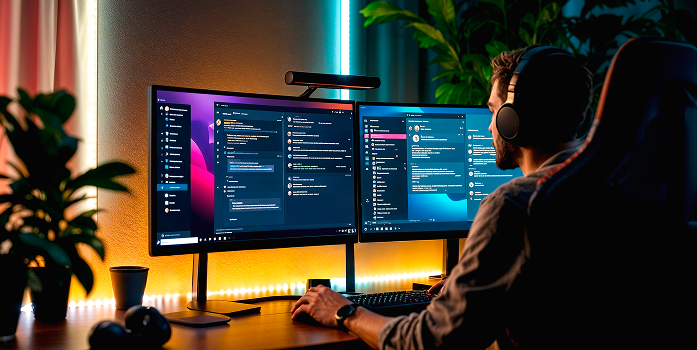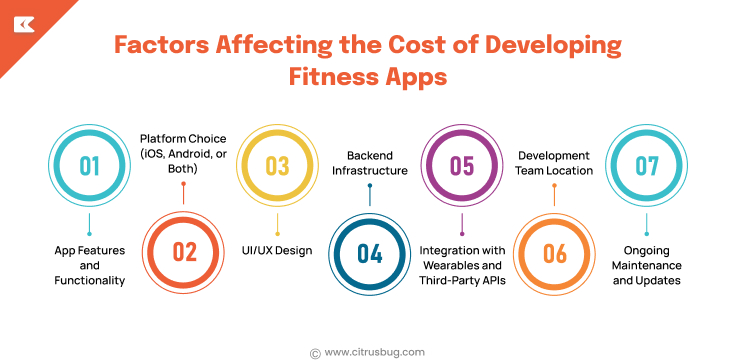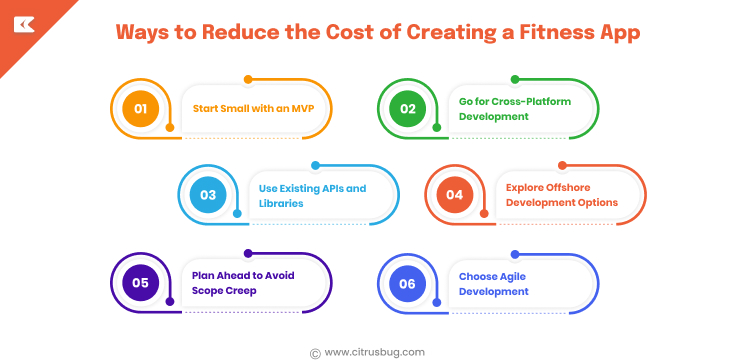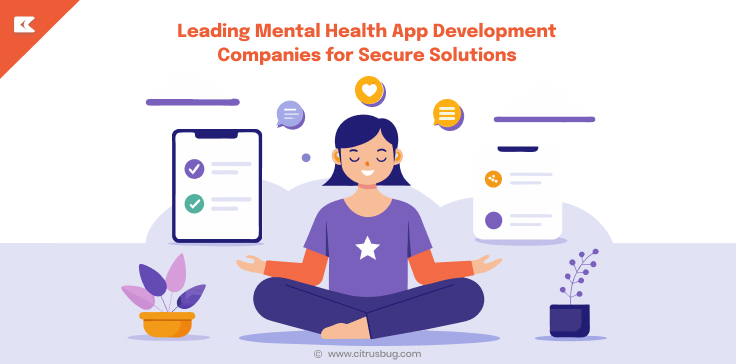Fitness App Development Cost in 2025: A Complete Guide for Businesses
- July 11, 2025
-
1748 Views
- by Ishan Vyas
Table of Contents
- Fitness App Development Cost Overview
- Factors Affecting the Cost of Developing Fitness Apps
- Cost of Building a Fitness App Depending on the Type
- How Much Does it Cost to Create Every Stage of a Fitness App
- Ways to Reduce the Cost of Creating a Fitness App
- Average Cost of Fitness App Development
- Final Thoughts
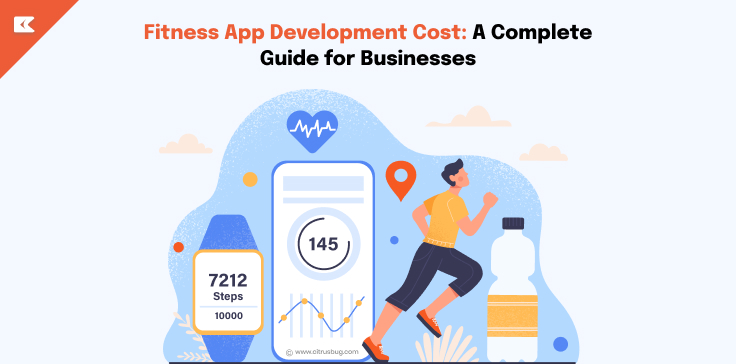
From tracking steps and logging meals to following home workouts and guided meditations, fitness app have become a part of daily life for millions. And as people continue to focus on health and wellness, the demand for smarter, more personalized fitness apps is only going up.
According to Statista, nearly 14 million fitness and workout apps were downloaded worldwide in January 2024 alone, demonstrating the strong demand for digital fitness solutions.
Valued at around $1.3 billion in 2022, the fitness app market is expected to expand at a steady CAGR of 17.6% through 2030. This rapid growth signals strong user demand and presents a significant opportunity for businesses looking to enter or scale in the digital fitness space.
So, if you’re thinking about building a fitness app of your own, you’re in good company.
But one of the first things most people ask is:
“How much will it actually cost to build a fitness app?”
Well, the truth is it depends. The cost can range from something fairly simple and affordable to a full-blown, feature-packed platform that requires a bigger budget. It all comes down to what kind of app you’re building, the features you want, and who you’re working with.
In this guide, we’ll break it all down. You’ll learn:
- What drives fitness app costs
- How much different types of apps usually cost
- What each development stage involves (and how much it might set you back)
- And smart ways to keep your budget in check
Fitness App Development Cost Overview
So, how much does it actually cost to build a fitness app?
Well, there’s no one-size-fits-all answer, but to give you a ballpark, fitness app development typically starts at around $20,000 for a basic version and can go well beyond $150,000 for more advanced platforms with features like AI coaching, wearable integration, or real-time video sessions.
Here’s a quick breakdown of what impacts the cost:
A simple app with basic tracking and workout plans: $20,000 – $40,000
A mid-range app with user accounts, scheduling, and media: $40,000 – $80,000
A high-end app with personalized plans, AI recommendations, wearable support, etc.: $80,000 – $150,000+
Of course, where you get your app built also plays a role. Working with a development company in the U.S. or Europe often comes with higher rates, while outsourcing to experienced teams in countries like India (like us at Citrusbug!) can help reduce costs significantly, without cutting corners on quality.
Keep in mind, this is just an overview. The actual cost will depend on your app’s goals, features, and the tech stack you choose. Next, let’s break down the key factors that influence pricing.
Factors Affecting the Cost of Developing Fitness Apps
Now that we’ve looked at the general price range, let’s talk about what drives the cost of a fitness app development. Think of it like building a house; the size, design, features, and materials all play a role. Fitness apps work the same way.
Here are the main factors that affect how much you’ll end up spending:
1. App Features and Functionality
This one’s big. The more features you want, the more time and effort it takes to build.
Here’s how it usually plays out:
- Basic features like login, workout plans, timers, and tracking are pretty standard.
- Advanced features, think AI-based personal coaching, real-time chat with trainers, live classes, wearable integration, or AR/VR workouts, will bump up the cost.
Pro tip: Start with the essentials, then scale up once your app gains traction.
2. Platform Choice (iOS, Android, or Both)
Are you building for Android? iOS? Or both?
- Developing for one platform is cheaper upfront.
- Going cross-platform (using tools like Flutter or React Native) can help you reach both audiences faster and more affordably.
3. UI/UX Design
Looks matter, especially in fitness apps. A clean, engaging, and easy-to-use design helps users stick around.
Modern fitness apps must align with the latest software and UI/UX trends in digital health to stay competitive and retain users.
Custom UI/UX designs, animations, and transitions take time to perfect, and yes, they add to the budget, but they’re totally worth it if user experience is a priority.
4. Backend Infrastructure
Fitness apps usually rely on a solid backend to store user data, stream videos, manage workout history, etc.
The more scalable and secure your backend is, the more it may cost, but it also ensures smoother performance, especially as your user base grows.
5. Integration with Wearables and Third-Party APIs
If you want your app to sync with Apple Watch, Fitbit, Google Fit, or include features like payment gateways or nutrition APIs, expect extra dev time (and costs) to handle those integrations.
Some fitness apps now support voice commands and chat features, powered by NLP and conversational AI, to guide users through workouts or answer questions in real time.
6. Development Team Location
Where your team is based has a huge impact on your budget:
- US/Europe: $100–$200/hour
- India/Eastern Europe: $25–$70/hour
Partnering with an experienced healthcare software development team can give you high-quality results at a fraction of the cost.
7. Ongoing Maintenance and Updates
Even after launch, your app will need regular updates, bug fixes, and support.
It’s smart to factor in monthly maintenance costs (usually 15–20% of your total dev budget) to keep your app running smoothly.
Whether you’re planning new feature rollouts or need support with scaling, technical healthcare consulting services ensure your app remains competitive and future-ready.
In short, fitness app development isn’t just about writing code; it’s about designing an experience, building the right tech stack, and planning for long-term success.
Cost of Building a Fitness App Depending on the Type
Not all fitness apps are built the same. Some focus on workouts, others on nutrition, and some try to do it all. Naturally, the type of app you’re building has a big impact on the cost.
Here’s a closer look at a few common fitness app categories and what it typically costs to build each:
1. Workout and Exercise Apps
These are the most popular ones offering video tutorials, workout libraries, routines, and goal tracking.
Features: User profiles, progress tracking, video or animation demos, push notifications, and in some cases, AI-based suggestions.
Estimated Cost: $25,000 – $80,000
If you’re keeping it simple, you can stay on the lower end. But if you want personalized plans, streaming, or AI, expect to pay more.
2. Diet and Nutrition Apps
These help users track calories, plan meals, and stay on top of their health goals.
Features: Food logging, barcode scanning, calorie calculators, water intake trackers, and recipe recommendations.
Estimated Cost: $30,000 – $75,000
Costs go up if you’re integrating databases or offering personalized meal plans based on user data.
3. Activity Tracking Apps
These apps are often paired with wearables to track steps, workouts, sleep, and more.
Features: GPS tracking, wearable integration (Apple Watch, Fitbit, etc.), heart rate monitoring, real-time syncing.
Estimated Cost: $35,000 – $90,000
If you’re building complex syncing or need access to a lot of sensor data, be ready for additional dev time.
4. Meditation and Wellness Apps
AI is even transforming mental wellness and meditation platforms, making mental health apps smarter and more engaging.
These focus on mental wellness, think guided meditation, stress relief, and sleep support.
Features: Audio sessions, sleep tracking, mood logs, reminders, calming animations.
Estimated Cost: $20,000 – $60,000
Since these apps usually rely on pre-recorded audio or video, they can be less expensive unless you add personalization or AI.
5. AI-Powered Personal Trainer Apps
These are the next-gen fitness apps that offer smart training recommendations, real-time feedback, and advanced personalization.
Features: Machine learning, AI chatbots, smart coaching, real-time form correction (if using camera or sensors).
Estimated Cost: $70,000 – $150,000+
More tech-heavy means more budget but also more potential to stand out in a crowded market.
How Much Does it Cost to Create Every Stage of a Fitness App
Developing a fitness app isn’t just about coding the features. There are multiple stages involved, from the initial idea to launching the app and maintaining it afterwards. Each stage comes with its timeline, team members, and yes, its own cost. Understanding these stages helps you budget smarter and avoid surprises along the way.
Let’s break it down stage by stage so you know where your money actually goes:
1. Discovery & Planning
Before any design or coding starts, you’ll need to figure out what you’re building and why.
What happens here: Market research, feature planning, defining goals, choosing a tech stack, and creating a project roadmap.
Estimated Cost: $1,500 – $5,000
Spending time here saves time (and money) later by avoiding scope creep.
2. UI/UX Design
This is where your app starts taking shape visually. A great user experience can make or break engagement.
What happens here: Wireframes, clickable prototypes, color palettes, typography, animations, and user flow design.
Estimated Cost: $3,000 – $12,000
Simple apps cost less, but if you want sleek animations and a polished look, budget accordingly.
3. Development (Frontend + Backend)
This is the core stage where your app is built.
What happens here: Writing the code for your app’s functionality, APIs, server-side logic, and user interface.
Estimated Cost: $15,000 – $80,000+
Cost depends on the platform (iOS, Android, or both), tech stack, and how complex your features are.
4. Testing & QA (Quality Assurance)
Every app needs to be tested before launch to make sure it runs smoothly and is bug-free.
What happens here: Functional testing, performance testing, device compatibility, security checks, and user feedback testing.
Estimated Cost: $2,000 – $8,000
Thorough testing helps you avoid expensive problems post-launch.
5. Deployment & App Store Launch
Getting your app into the hands of users.
What happens here: Final app packaging, store listing creation, ASO (App Store Optimization), publishing to Google Play and Apple App Store.
Estimated Cost: $1,000 – $3,000
Includes dev time plus the standard app store fees.
6. Post-Launch Maintenance & Support
Once your app is live, it’ll still need updates, bug fixes, and maybe new features.
What happens here: Ongoing monitoring, performance improvements, feature rollouts, and platform compatibility updates.
Estimated Monthly Cost: $1,000 – $5,000
Think of this as taking care of your app so it keeps growing along with your user base.
| Development Stage | Estimated Cost Range |
|---|---|
| Discovery & Planning | $1,500 – $5,000 |
| UI/UX Design | $3,000 – $12,000 |
| Development | $15,000 – $80,000+ |
| Testing & QA | $2,000 – $8,000 |
| Deployment | $1,000 – $3,000 |
| Maintenance (Monthly) | $1,000 – $5,000 |
Ways to Reduce the Cost of Creating a Fitness App
Building a fitness app doesn’t always have to come with a huge price tag. There are smart ways to cut down costs without cutting corners, you just need a clear strategy and the right development partner.
Start Small with an MVP
If you’re launching a new app, you don’t need to build everything at once.
Focus on creating a Minimum Viable Product (MVP) just the core features that solve your users’ main problem.
You’ll get to market faster, gather feedback early, and avoid wasting money on features people may not even use.
Go for Cross-Platform Development
Instead of building separate apps for Android and iOS, go with cross-platform tools like Flutter or React Native.
You’ll save time, reduce development hours, and still get great performance across both platforms.
Use Existing APIs and Libraries
There’s no need to reinvent the wheel.
Using pre-built solutions for tasks such as payment processing, workout templates, nutrition databases, or chat features can save a significant amount of development time and money.
Explore Offshore Development Options
Developing a fitness app with teams based in North America or Western Europe can significantly increase overall project costs due to higher hourly rates in these regions.
Opting for offshore development, particularly in regions known for reliable technical expertise and cost efficiency can be a practical way to reduce expenses without sacrificing quality.
It is essential, to conduct proper due diligence and select a healthcare app development partner with proven experience, clear communication protocols, and a strong portfolio.
Plan Ahead to Avoid Scope Creep
Last-minute changes or unclear goals are among the primary reasons costs increase.
Spend time upfront planning your app’s functionality, tech stack, and user flow. A well-defined scope equals fewer surprises, resulting in better budget control.
Choose Agile Development
Agile enables you to build in small steps, receive feedback, and refine your approach along the way.
It’s flexible, faster, and helps you make better decisions without wasting resources on features that may not work.
Bottom line? With the right approach, you can reduce your fitness app development costs without compromising on quality, user experience, or future scalability.
Average Cost of Fitness App Development
By now, you’ve seen how several factors can influence the overall development cost, from features and app type to design, platform, and even your choice of development team. What does the average cost of a fitness app look like in 2025?
Here’s a simplified overview based on typical project scopes:
| Type of Fitness App | Estimated Development Cost |
|---|---|
| Basic Fitness Tracker | $20,000 – $40,000 |
| Mid-Level Workout or Diet App | $40,000 – $75,000 |
| Feature-Rich, Cross-Platform App | $75,000 – $120,000 |
| AI-Powered or Wearable-Integrated App | $100,000 – $150,000+ |
These numbers reflect average ranges and can shift based on location, tech stack, and long-term support requirements. For example:
- A startup launching an MVP with core features might stay closer to the lower end of the scale.
- A fitness brand looking to deliver a fully personalized, high-performance app with advanced integrations would naturally lean toward the higher end.
Keep in mind that post-launch costs, such as maintenance, app store updates, and feature enhancements, should also be part of your overall budget planning, typically accounting for around 15–20% of the initial development cost per year.
Final Thoughts
As the demand for digital health and wellness solutions continues to rise, fitness apps are becoming more than just a trend; they’re a business opportunity with real staying power. However, like any smart investment, it’s essential to understand the costs involved before making a decision.
To recap:
- Fitness app development costs can range from $20,000 to $150,000+, depending on features, platform, design, and complexity.
- The total cost is influenced by the choices you make at each stage, from planning and tech stack to design and post-launch support.
- Starting lean with an MVP, choosing the right development approach, and planning can help keep your project cost-effective and efficient.
Whether you’re a startup with a fresh idea or a fitness brand looking to expand your digital offerings, having a clear roadmap (and the right development team) makes all the difference.
If you’re ready to bring your idea to life, our fitness app development services can help you build a scalable, secure, and user-friendly app tailored to your goals.





 SaaS Development
SaaS Development Web Application Development
Web Application Development Mobile Application Development
Mobile Application Development Custom Software Development
Custom Software Development Cloud Development
Cloud Development DevOps Development
DevOps Development MVP Development
MVP Development Digital Product Development
Digital Product Development Hire Chatbot Developers
Hire Chatbot Developers Hire Python Developers
Hire Python Developers Hire Django Developers
Hire Django Developers Hire ReactJS Developers
Hire ReactJS Developers Hire AngularJS Developers
Hire AngularJS Developers Hire VueJS Developers
Hire VueJS Developers Hire Full Stack Developers
Hire Full Stack Developers Hire Back End Developers
Hire Back End Developers Hire Front End Developers
Hire Front End Developers AI Healthcare Software Development & Consulting
AI Healthcare Software Development & Consulting Healthcare App Development
Healthcare App Development EHR Software Development
EHR Software Development Healthcare AI Chatbot Development
Healthcare AI Chatbot Development Telemedicine App Development Company
Telemedicine App Development Company Medical Billing Software Development
Medical Billing Software Development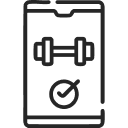 Fitness App Development
Fitness App Development RPM Software Development
RPM Software Development Medicine Delivery App Development
Medicine Delivery App Development Medical Device Software Development
Medical Device Software Development Patient Engagement Software Solutions
Patient Engagement Software Solutions Mental Health App Development
Mental Health App Development Healthcare IT Consulting
Healthcare IT Consulting Healthcare CRM Software Development
Healthcare CRM Software Development Healthcare IT Managed Services
Healthcare IT Managed Services Healthcare Software Testing services
Healthcare Software Testing services Medical Practice Management Software
Medical Practice Management Software Outsourcing Healthcare IT Services
Outsourcing Healthcare IT Services IoT Solutions for Healthcare
IoT Solutions for Healthcare Medical Image Analysis Software Development Services
Medical Image Analysis Software Development Services Lending Software Development Services
Lending Software Development Services Payment Gateway Software Development
Payment Gateway Software Development Accounting Software Development
Accounting Software Development AI-Driven Banking App Development
AI-Driven Banking App Development Insurance Software Development
Insurance Software Development Finance Software Development
Finance Software Development Loan Management Software Development
Loan Management Software Development Decentralized Finance Development Services
Decentralized Finance Development Services eWallet App Development
eWallet App Development Payment App Development
Payment App Development Money Transfer App Development
Money Transfer App Development Mortgage Software Development
Mortgage Software Development Insurance Fraud Detection Software Development
Insurance Fraud Detection Software Development Wealth Management Software Development
Wealth Management Software Development Cryptocurrency Exchange Platform Development
Cryptocurrency Exchange Platform Development Neobank App Development
Neobank App Development Stock Trading App Development
Stock Trading App Development AML software Development
AML software Development Web3 Wallet Development
Web3 Wallet Development Robo-Advisor App Development
Robo-Advisor App Development Supply Chain Management Software Development
Supply Chain Management Software Development Fleet Management Software Development
Fleet Management Software Development Warehouse Management Software Development
Warehouse Management Software Development LMS Development
LMS Development Education App Development
Education App Development Inventory Management Software Development
Inventory Management Software Development Property Management Software Development
Property Management Software Development Real Estate CRM Software Development
Real Estate CRM Software Development Real Estate Document Management Software
Real Estate Document Management Software Construction App Development
Construction App Development Construction ERP Software Development
Construction ERP Software Development
